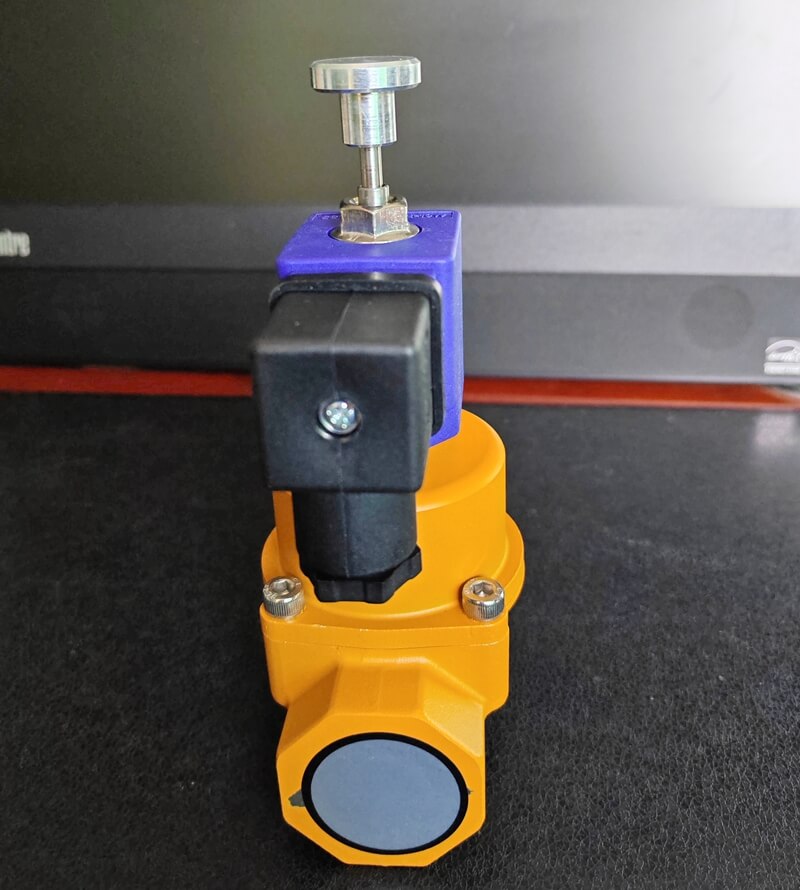The Night the Gas Detector Screamed: A Life-Saving Lesson in Home Safety
The Silent Killer in Our Kitchen
It was a typical Tuesday evening. The Evans family had just finished a hearty dinner of pasta, and Sarah Evans was loading the dishwasher. Her husband, Mark, was helping their two children with homework in the living room. The house was filled with the usual sounds of family life—laughter, chatter, and the faint hum of the refrigerator.
What they didn't know was that a silent, invisible danger was lurking. A tiny, almost imperceptible crack had developed in the hose connecting the stove to the natural gas line. A slow, steady stream of odorless natural gas was seeping into their kitchen.
The Guardian on the Wall
Just a month prior, after reading a news article about a neighborhood house fire caused by a gas leak, Mark had made a quick but crucial decision. He went to the local hardware store and bought two home gas leak detectors. One was installed near the ceiling in the kitchen, and another in the hallway outside the bedrooms, as per the instructions.
At the time, it felt like a minor, almost forgettable chore. Just another box to tick on the home maintenance list. Sarah had even joked, "Another beeping thing to worry about!" But that small, unassuming device on the kitchen wall was about to become the most important appliance in their home.
The Scream That Saved a Family
As Sarah wiped down the counters, she felt an unusual, slight headache coming on. She dismissed it as fatigue. A few minutes later, her dog, Max, started whining and acting restless—another subtle sign she almost missed.
Then, it happened.
A piercing, high-pitched SCREECH sliced through the evening calm. It wasn't the gentle chirp of a low battery; it was the continuous, urgent alarm of the gas leak detector.
Heart leaping into her throat, Sarah froze for a second before her training kicked in. She remembered the guidelines: Don't turn any lights or appliances on or off. Don't create a spark.
"Mark!" she yelled, her voice tight with panic. "The gas detector! Get the kids and get out! Now!"
Mark herded the confused children and the dog straight out the front door, while Sarah quickly and carefully cracked open a few windows on her way out. They gathered at their designated safe spot by the mailbox, their hearts pounding. From there, Mark called the emergency gas line and the fire department.
The Aftermath: A Wake-Up Call
When the firefighters arrived with their professional-grade detectors, they confirmed a significant leak from the stove connection. "That detector of yours did its job perfectly," one firefighter said gravely. "Another hour, and this concentration of gas could have been ignited by the water heater pilot light or even a static electricity spark. You're very lucky."
The Evans family was shaken but safe. The "minor chore" had unequivocally saved their lives and their home.
Why a Home Gas Leak Detector is Non-Negotiable
This story highlights a terrifying reality that can affect any home. Natural gas and propane, used for cooking and heating, are highly combustible. A leak can lead to:
· Fire and Explosion: It takes only a small spark to ignite accumulated gas, leading to a devastating explosion.
· Carbon Monoxide (CO) Poisoning: While natural gas itself isn't toxic, incomplete combustion from gas appliances can produce carbon monoxide—a deadly, odorless gas. Many modern combustible gas leak detectors also include carbon monoxide sensors, offering dual protection.
You cannot rely on your sense of smell alone. While a rotten egg smell (mercaptan) is added to natural gas, you might not smell it if:
· You have a mild leak.
· You are asleep.
· You have a diminished sense of smell.
· The odorant has faded over time.
Protect Your Family: A Simple Guide
Don't wait for a warning. Follow these steps to ensure your family's safety:
1. Purchase a Quality Detector: Choose a UL-listed device that detects both combustible gases (natural gas, propane) and carbon monoxide.
2. Install Correctly: Place detectors near gas-burning appliances (like stoves, furnaces, and water heaters) and on every level of your home, especially near bedrooms. Follow the manufacturer's instructions for height, as some gases are heavier or lighter than air.
3. Test Regularly: Press the "test" button monthly to ensure the alarm and sensors are working.
4. Replace as Directed: Most gas detectors have a lifespan of 5-7 years. Mark the replacement date on your calendar.
A home gas leak detector is more than just a device; it's a 24/7 guardian. It's the watchful eye that never sleeps, protecting your most precious possessions—your family and your home—from a threat you can't see. The Evans family learned this lesson the hard way. Let their story be your gentle, but firm, nudge to take action today. The small investment is a small price to pay for the priceless peace of mind and safety it provides.
-
 The Primary Purpose of a Home Gas Leak Detector: Safety and Prevention
The Primary Purpose of a Home Gas Leak Detector: Safety and PreventionDo you like ?0
Read more -
 Home Gas Leak Detectors: Your Essential Shield Against Silent Household Disaster
Home Gas Leak Detectors: Your Essential Shield Against Silent Household DisasterDo you like ?0
Read more -
 Gas Solenoid Valves: Enhancing Safety and Efficiency in Rural Households
Gas Solenoid Valves: Enhancing Safety and Efficiency in Rural HouseholdsDo you like ?0
Read more -
 The Critical Role of Gas Solenoid Valves in Preventing Home Gas Leak
The Critical Role of Gas Solenoid Valves in Preventing Home Gas LeakDo you like ?0
Read more -
 Real-Life Heroes: How Gas Solenoid Valves Save Homes from Disaster
Real-Life Heroes: How Gas Solenoid Valves Save Homes from DisasterDo you like ?0
Read more -
 Smart Guardian: How Gas Solenoid Valves Make Your Home Safer & Smarter
Smart Guardian: How Gas Solenoid Valves Make Your Home Safer & SmarterDo you like ?0
Read more









